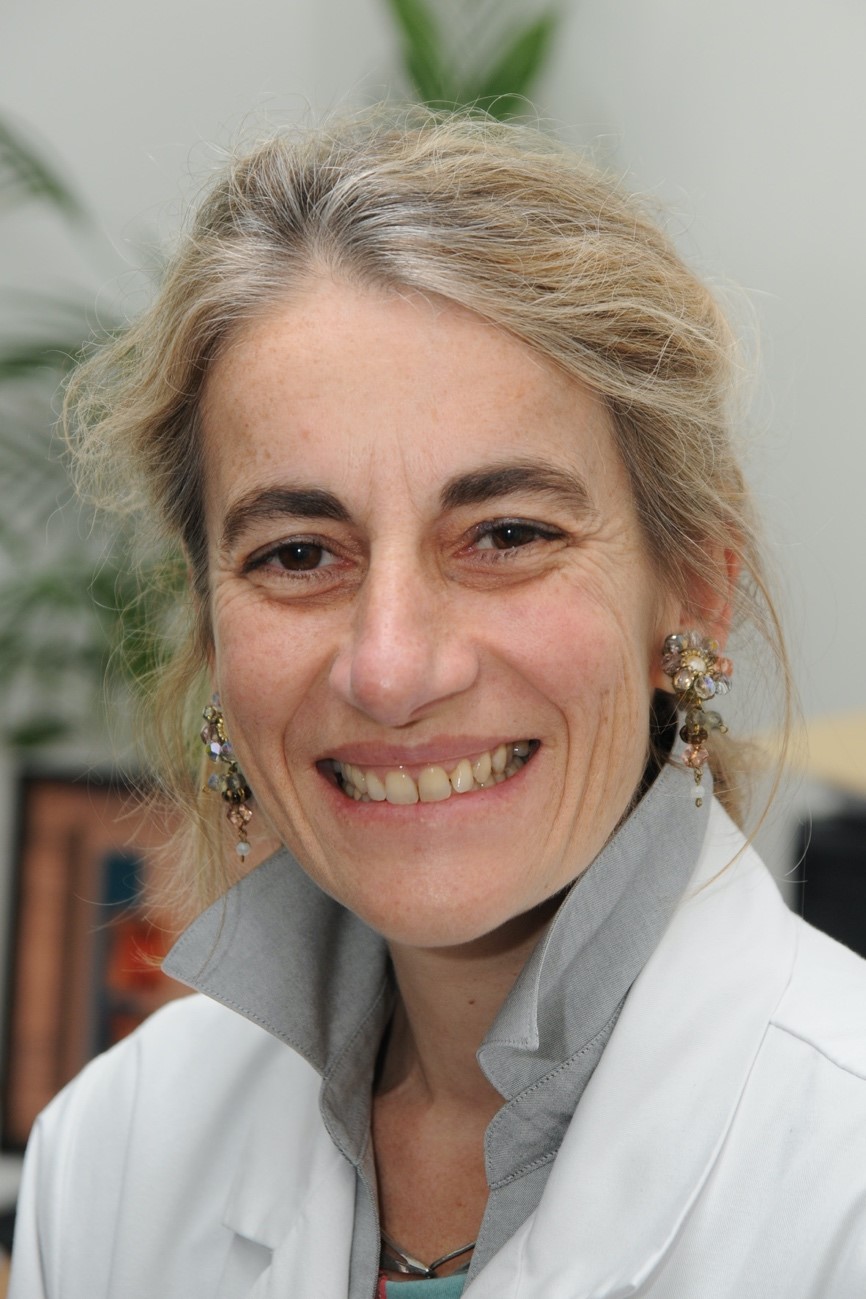User login
In patients with completely resected non–small cell lung cancer and proven N2 disease, postoperative radiotherapy (PORT) provided no significant improvement in disease-free survival (DFS) at 3 years, according to a phase 3 trial.
Investigator Cécile Le Péchoux, MD, a radiation oncologist from Institut Gustave Roussy in Paris, presented the results of the Lung ART trial at the European Society for Medical Oncology Virtual Congress 2020.
The results resolve what ESMO commentator Rafal Dziadziuszko, MD, PhD, of Medical University of Gdansk (Poland), called “perhaps the longest ongoing debate in thoracic oncology,” on whether or not to irradiate patients with mediastinal lymph node involvement after surgery.
Dr. Dziadziuszko noted that some past studies have suggested PORT may provide improved local control and a survival benefit, but other studies have shown no survival benefit and evidence of harm with PORT.
“So here is an academic study with the answer,” Dr. Dziadziuszko said.
Study details
The intention-to-treat population of Lung ART included 252 patients randomized to receive 5.5 weeks of PORT (54 Gy) and 249 patients randomized to the control arm without PORT.
The patients’ median age was 61 years, 66% were men, and adenocarcinoma was the predominant histology (76% of patients in the control arm and 70% in the PORT arm). All patients had received adjuvant or neoadjuvant chemotherapy.
The median follow-up was 4.8 years. The 3-year DFS rate was 47.1% in the PORT arm and 43.8% in the control arm (hazard ratio, 0.85; 95% confidence interval, 0.67-1.07, P = .16). The median DFS was 30.5 months with PORT and 22.8 months in the control group. As for DFS components, the rate for death as a first event was 14.6% in the PORT arm and 5.3% among controls.
The mediastinal relapse rate was higher among controls, at 46.1% versus 25.0% with PORT.
The 3-year overall survival rate was 66.5% among patients in the PORT arm and 68.5% in the control arm.
At least one grade 3-4 toxicity was reported in 23.7% of the PORT group and in 15.0% of controls. The grade 3-4 cardiopulmonary toxicity rate of 10.8% in the PORT arm and 4.9% in the control arm needs to be further explored, Dr. Le Péchoux said.
Applying the results to practice
In response to a question as to which patients might benefit from PORT, Dr. Le Péchoux pointed out that, among patients who have nodes in the inferior part of the mediastinum closer to the heart, PORT might be more toxic.
“For the moment, we did not see anything that would give us a clue,” Dr. Le Péchoux said. “We have a lot to investigate.”
Further analyses looking at patterns of failure, predictive factors of efficacy and toxicity, quality of radiotherapy, and quality of surgery are planned, she added.
Dr. Le Péchoux concluded: “Conformal PORT cannot be recommended as standard of care in all completely resected stage IIIAN2 [non–small cell lung cancer] patients.”
Dr. Dziadziuszko commented further: “For my practice, this is a clear message that routine PORT should not be used in these patients. We are looking for more effective systemic therapies.”
He added that “over 50% 5-year survival in these patients is a great result, and is made possible by modern staging and modern surgery.”
The Lung ART study was sponsored by Gustave Roussy and supported by the French National Cancer Institute, French Health Ministry, and a Cancer Research UK grant. Dr. Le Péchoux and Dr. Dziadziuszko reported no conflicts of interest related to the presentation.
SOURCE: Le Péchoux C et al. ESMO 2020, Abstract LBA3_PR.
In patients with completely resected non–small cell lung cancer and proven N2 disease, postoperative radiotherapy (PORT) provided no significant improvement in disease-free survival (DFS) at 3 years, according to a phase 3 trial.
Investigator Cécile Le Péchoux, MD, a radiation oncologist from Institut Gustave Roussy in Paris, presented the results of the Lung ART trial at the European Society for Medical Oncology Virtual Congress 2020.
The results resolve what ESMO commentator Rafal Dziadziuszko, MD, PhD, of Medical University of Gdansk (Poland), called “perhaps the longest ongoing debate in thoracic oncology,” on whether or not to irradiate patients with mediastinal lymph node involvement after surgery.
Dr. Dziadziuszko noted that some past studies have suggested PORT may provide improved local control and a survival benefit, but other studies have shown no survival benefit and evidence of harm with PORT.
“So here is an academic study with the answer,” Dr. Dziadziuszko said.
Study details
The intention-to-treat population of Lung ART included 252 patients randomized to receive 5.5 weeks of PORT (54 Gy) and 249 patients randomized to the control arm without PORT.
The patients’ median age was 61 years, 66% were men, and adenocarcinoma was the predominant histology (76% of patients in the control arm and 70% in the PORT arm). All patients had received adjuvant or neoadjuvant chemotherapy.
The median follow-up was 4.8 years. The 3-year DFS rate was 47.1% in the PORT arm and 43.8% in the control arm (hazard ratio, 0.85; 95% confidence interval, 0.67-1.07, P = .16). The median DFS was 30.5 months with PORT and 22.8 months in the control group. As for DFS components, the rate for death as a first event was 14.6% in the PORT arm and 5.3% among controls.
The mediastinal relapse rate was higher among controls, at 46.1% versus 25.0% with PORT.
The 3-year overall survival rate was 66.5% among patients in the PORT arm and 68.5% in the control arm.
At least one grade 3-4 toxicity was reported in 23.7% of the PORT group and in 15.0% of controls. The grade 3-4 cardiopulmonary toxicity rate of 10.8% in the PORT arm and 4.9% in the control arm needs to be further explored, Dr. Le Péchoux said.
Applying the results to practice
In response to a question as to which patients might benefit from PORT, Dr. Le Péchoux pointed out that, among patients who have nodes in the inferior part of the mediastinum closer to the heart, PORT might be more toxic.
“For the moment, we did not see anything that would give us a clue,” Dr. Le Péchoux said. “We have a lot to investigate.”
Further analyses looking at patterns of failure, predictive factors of efficacy and toxicity, quality of radiotherapy, and quality of surgery are planned, she added.
Dr. Le Péchoux concluded: “Conformal PORT cannot be recommended as standard of care in all completely resected stage IIIAN2 [non–small cell lung cancer] patients.”
Dr. Dziadziuszko commented further: “For my practice, this is a clear message that routine PORT should not be used in these patients. We are looking for more effective systemic therapies.”
He added that “over 50% 5-year survival in these patients is a great result, and is made possible by modern staging and modern surgery.”
The Lung ART study was sponsored by Gustave Roussy and supported by the French National Cancer Institute, French Health Ministry, and a Cancer Research UK grant. Dr. Le Péchoux and Dr. Dziadziuszko reported no conflicts of interest related to the presentation.
SOURCE: Le Péchoux C et al. ESMO 2020, Abstract LBA3_PR.
In patients with completely resected non–small cell lung cancer and proven N2 disease, postoperative radiotherapy (PORT) provided no significant improvement in disease-free survival (DFS) at 3 years, according to a phase 3 trial.
Investigator Cécile Le Péchoux, MD, a radiation oncologist from Institut Gustave Roussy in Paris, presented the results of the Lung ART trial at the European Society for Medical Oncology Virtual Congress 2020.
The results resolve what ESMO commentator Rafal Dziadziuszko, MD, PhD, of Medical University of Gdansk (Poland), called “perhaps the longest ongoing debate in thoracic oncology,” on whether or not to irradiate patients with mediastinal lymph node involvement after surgery.
Dr. Dziadziuszko noted that some past studies have suggested PORT may provide improved local control and a survival benefit, but other studies have shown no survival benefit and evidence of harm with PORT.
“So here is an academic study with the answer,” Dr. Dziadziuszko said.
Study details
The intention-to-treat population of Lung ART included 252 patients randomized to receive 5.5 weeks of PORT (54 Gy) and 249 patients randomized to the control arm without PORT.
The patients’ median age was 61 years, 66% were men, and adenocarcinoma was the predominant histology (76% of patients in the control arm and 70% in the PORT arm). All patients had received adjuvant or neoadjuvant chemotherapy.
The median follow-up was 4.8 years. The 3-year DFS rate was 47.1% in the PORT arm and 43.8% in the control arm (hazard ratio, 0.85; 95% confidence interval, 0.67-1.07, P = .16). The median DFS was 30.5 months with PORT and 22.8 months in the control group. As for DFS components, the rate for death as a first event was 14.6% in the PORT arm and 5.3% among controls.
The mediastinal relapse rate was higher among controls, at 46.1% versus 25.0% with PORT.
The 3-year overall survival rate was 66.5% among patients in the PORT arm and 68.5% in the control arm.
At least one grade 3-4 toxicity was reported in 23.7% of the PORT group and in 15.0% of controls. The grade 3-4 cardiopulmonary toxicity rate of 10.8% in the PORT arm and 4.9% in the control arm needs to be further explored, Dr. Le Péchoux said.
Applying the results to practice
In response to a question as to which patients might benefit from PORT, Dr. Le Péchoux pointed out that, among patients who have nodes in the inferior part of the mediastinum closer to the heart, PORT might be more toxic.
“For the moment, we did not see anything that would give us a clue,” Dr. Le Péchoux said. “We have a lot to investigate.”
Further analyses looking at patterns of failure, predictive factors of efficacy and toxicity, quality of radiotherapy, and quality of surgery are planned, she added.
Dr. Le Péchoux concluded: “Conformal PORT cannot be recommended as standard of care in all completely resected stage IIIAN2 [non–small cell lung cancer] patients.”
Dr. Dziadziuszko commented further: “For my practice, this is a clear message that routine PORT should not be used in these patients. We are looking for more effective systemic therapies.”
He added that “over 50% 5-year survival in these patients is a great result, and is made possible by modern staging and modern surgery.”
The Lung ART study was sponsored by Gustave Roussy and supported by the French National Cancer Institute, French Health Ministry, and a Cancer Research UK grant. Dr. Le Péchoux and Dr. Dziadziuszko reported no conflicts of interest related to the presentation.
SOURCE: Le Péchoux C et al. ESMO 2020, Abstract LBA3_PR.
FROM ESMO 2020

